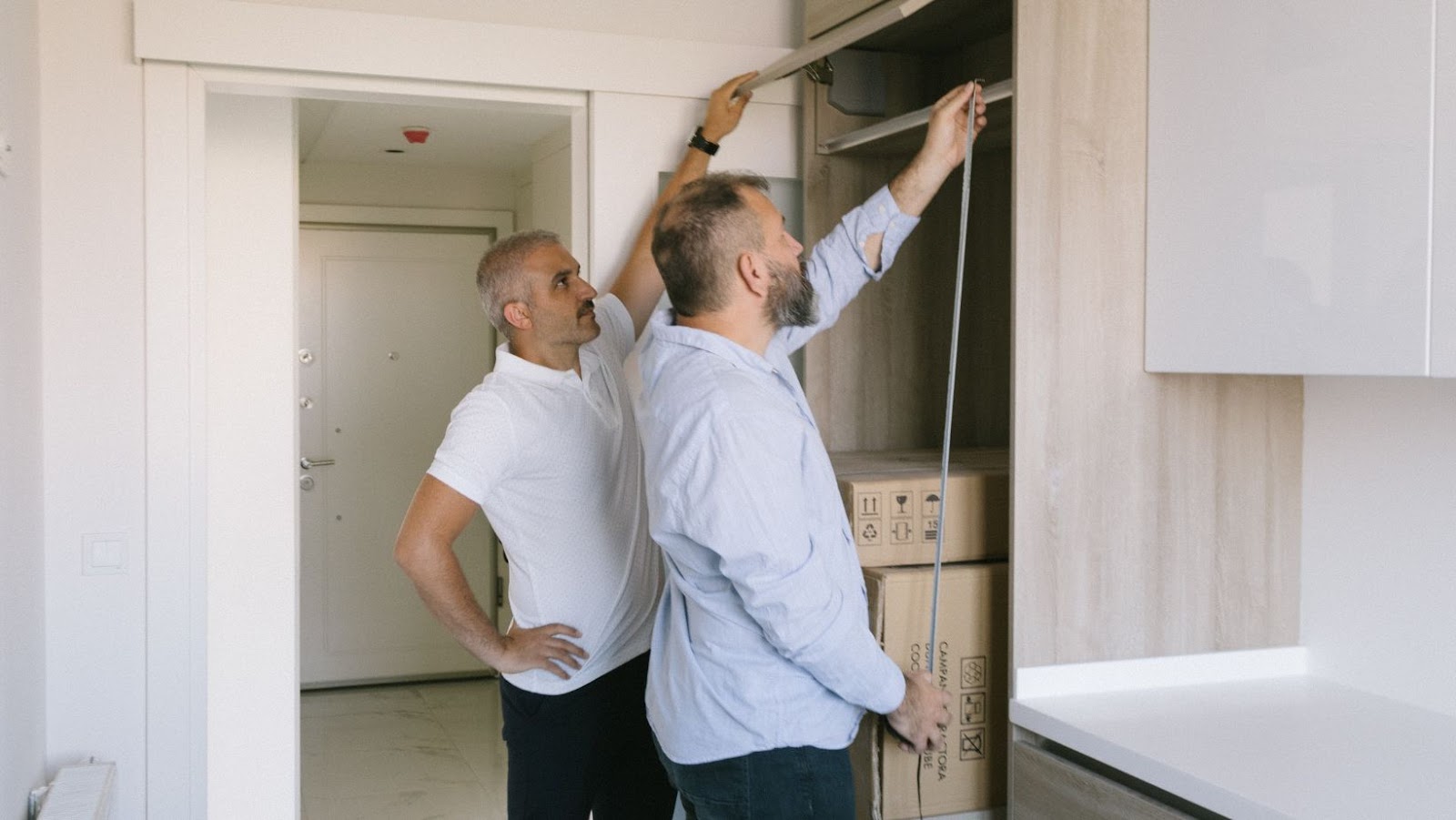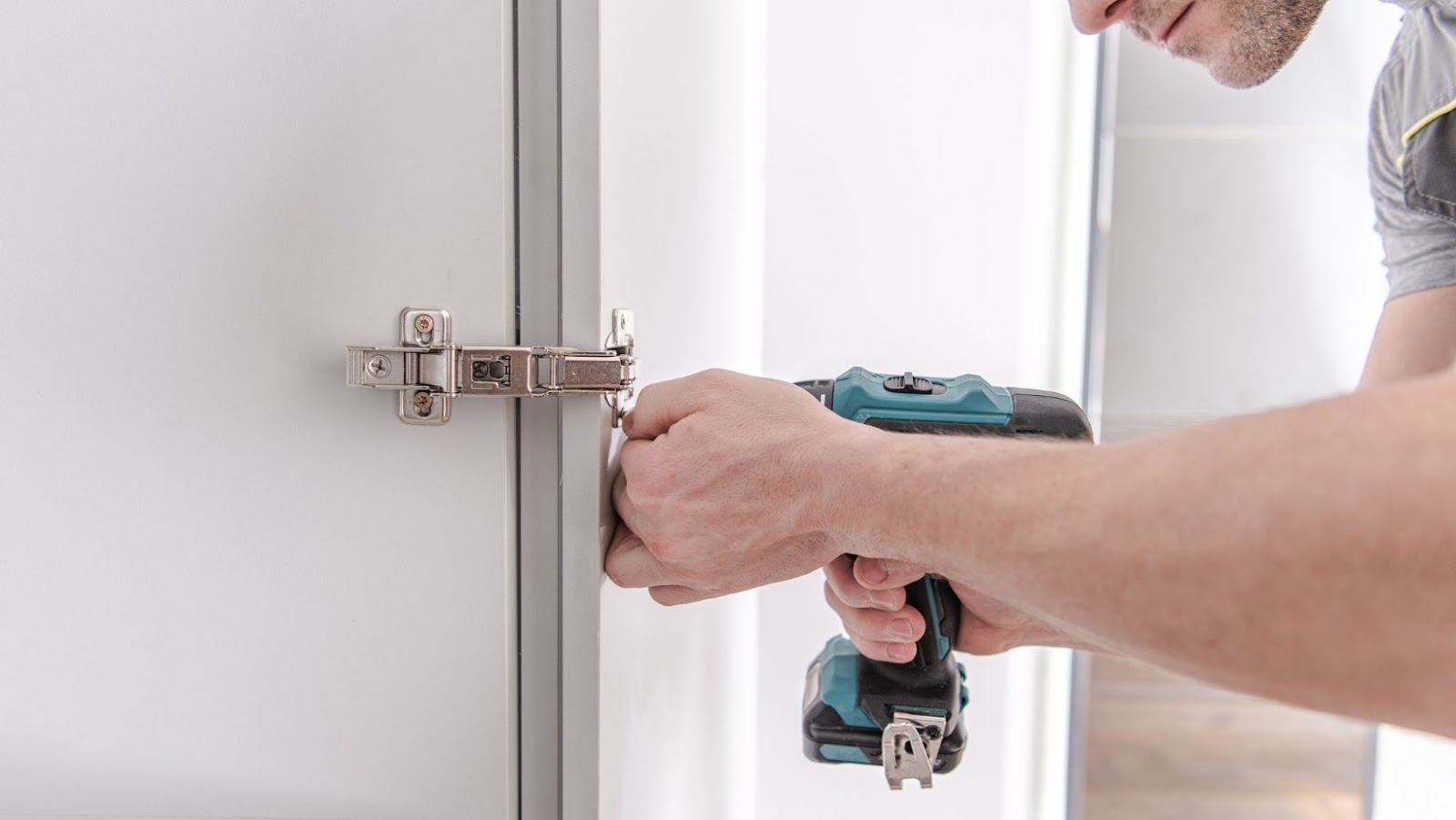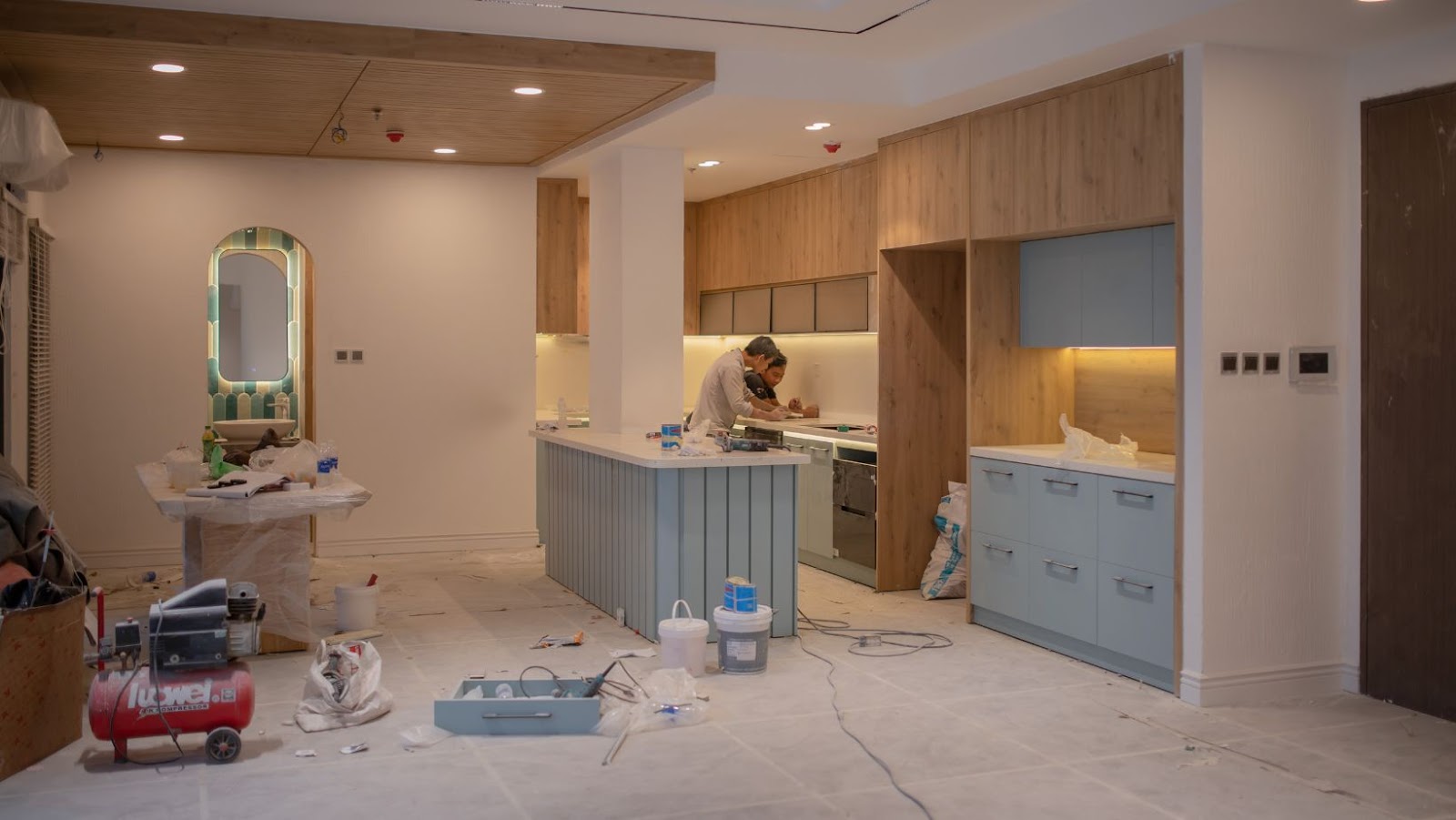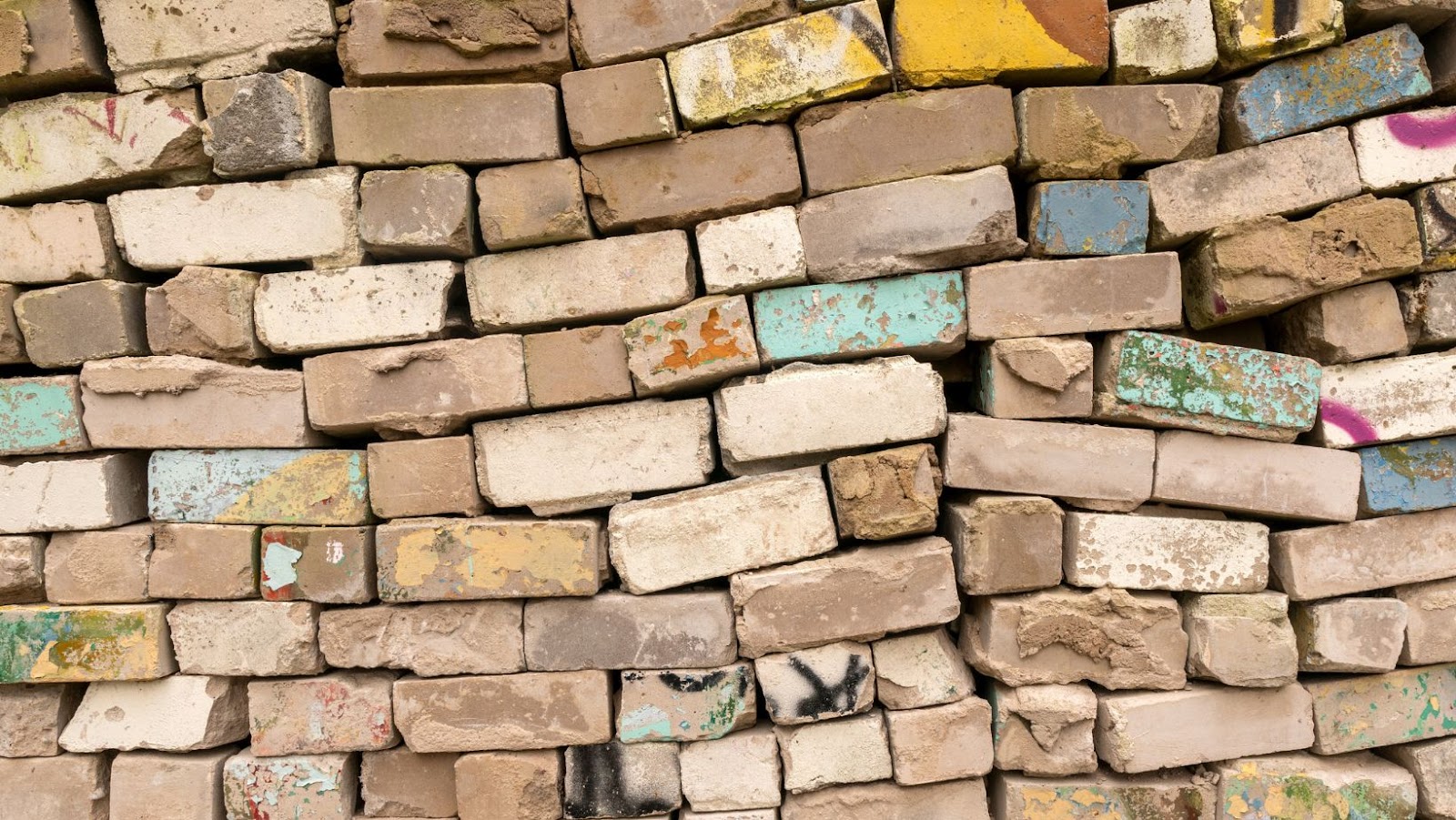FAQs About Replacing Cabinet Doors

Replacing cabinet doors is a great DIY project for those looking to refresh their kitchen or bathroom. Old, outdated cabinets can drastically change the look and feel of your space, and replacing the doors can be a relatively simple task.
While replacing the cabinet doors can be a great way to spruce up your kitchen or bathroom, it’s important to understand the reasons why you might want to do it in the first place. Let’s dive into some of the reasons for replacing your cabinet doors.
How to Replace Cabinet Doors
The appearance of a cabinet is one of the primary reasons homeowners choose to replace its doors. Over time, cabinet doors can become worn, faded, or damaged, negatively impacting the overall look of your kitchen or bathroom. Additionally, replacing cabinet doors can be an affordable and convenient way to upgrade your cabinets and give your space a fresh, new look. Instead of investing in a complete cabinet replacement, which can be costly and time-consuming, simply replacing the doors can achieve a similar effect.
If you’re considering replacing your cabinet doors, here are some common FAQs about the process:
Q: How do I measure replacement cabinet doors?
A: Measure the width and height of the cabinet opening and then subtract 1/2-inch from both measurements to determine the size of the replacement doors.
Q: Can I replace cabinet doors myself?
A: Yes, replacing cabinet doors is a straightforward process that can be completed by most homeowners. There are many online resources and tutorials available to guide you through the process step-by-step.
Q: How much does it cost to replace cabinet doors?
A: The cost of replacing cabinet doors can vary depending on the material, style, and size of the doors. On average, homeowners can expect to pay anywhere between $50 and $300 per door. Pro-tip: Consider purchasing pre-made cabinet doors to save on labour costs.
Functionality
Replacing cabinet doors is a great way to give your kitchen a fresh new look without having to rip up the entire thing. Here are some common FAQs about replacing cabinet doors:
How to replace cabinet doors?
Step 1: Remove the old cabinet doors from the hinges by unscrewing them with a drill or screwdriver.
Step 2: Take careful measurements of the cabinet openings and order new doors in the correct size and style.
Step 3: Once the new doors arrive, attach the hinges to the back of the door using screws and attach the hinges back onto the cabinet frame.
Step 4: Check that the new doors are level and open and close smoothly.
Why replace cabinet doors?
There are several reasons why you may want to replace your cabinet doors. Perhaps they are outdated or damaged, or you simply want to update the style of your kitchen. Replacing the doors can be a more cost-effective solution than replacing the entire cabinet.
What is the functionality of replacing cabinet doors?
Replacing cabinet doors can greatly improve the functionality of your kitchen. New doors can update the style and colour scheme of your kitchen, increase storage space, and make accessing your kitchen tools and equipment easier. Plus, it can increase the value of your home if you’re planning to sell. Pro tip: Before replacing your cabinet doors, consider adding organisational features like pull-out drawers or lazy susans to further enhance your kitchen’s functionality.
Cost Savings
Replacing cabinet doors can be a more cost-effective solution than refacing or completely replacing kitchen cabinets. Here are some reasons why replacing cabinet doors can help you save costs:
1. Upgrading the Look: Replacing your cabinet doors offers an easy way to upgrade your kitchen’s aesthetic appeal without breaking the bank on a full remodel.
2. Minimal Labour : Compared to refacing or replacing kitchen cabinets, replacing cabinet doors involves less labour and can be completed in a day or two. You can even do it yourself!
3. Preserving the Existing Cabinets: If your kitchen cabinets are structurally sound, replacing the doors can give them a new life and save you the cost of buying completely new cabinets.
Frequently asked questions about replacing cabinet doors include factors like selecting the right door style, measuring the cabinet door size correctly, highest-quality wood for durability, and where to buy replacement cabinet doors. A simple online search about how to replace cabinet doors can give you all the necessary information and step-by-step instructions to complete this cost-saving project!
Steps to Replacing Cabinet Doors
Replacing cabinet doors is a project that can refresh the look of your kitchen or bathroom. Before you begin, make sure you have the necessary tools and supplies to complete the job.
Let’s get into the steps necessary to replace your cabinet doors and how to do it safely and effectively.
Measuring Your Existing Cabinet Doors
Before replacing your cabinet doors, it’s crucial to measure the existing ones to ensure the new doors fit correctly. To measure your cabinet doors, follow these steps:
Measure the height of the cabinet door from top to bottom.
Measure the width of the cabinet door from left to right.
Measure the thickness of the cabinet door.

Check if the corners of the door are square or rounded and take note.
Once you have taken these measurements, you can start shopping for new cabinet doors that fit your requirements.
Whether you’re upgrading your kitchen or looking to replace old, worn-out cabinet doors, it’s essential to know the basics of cabinet door replacement. Here are some frequently asked questions about replacing cabinet doors:
Q. How much does it cost to replace cabinet doors?
A. The cost of replacing cabinet doors depends on various factors, such as the size and material of the doors. On average, you can expect to pay around $100 to $300 per door.
Q. Can I replace cabinet doors without replacing the cabinets?
A. Yes, you can replace cabinet doors without replacing the cabinets if the cabinet boxes are in good condition.
Q. What types of materials are available for cabinet doors?
A. Common materials for cabinet doors include solid wood, plywood, MDF, and Thermofoil.
Pro tip: Before buying new cabinet doors, it’s best to consult with a professional to ensure you get the right size and style for your cabinets.
Selecting The Right Style And Material
Replacing cabinet doors can refresh the look of your kitchen without the need for a full renovation. Choosing the right style and material of cabinet doors is crucial to achieving the desired look and functionality of your cabinets. Here are some steps to follow:
1. Measure your existing cabinet doors accurately to determine the size and quantity of replacement doors needed.
2. Decide on the style and design of the cabinet doors. Popular styles include Shaker, flat-panel, and raised-panel.
3. Choose a material for the doors that suits your style and budget. Common materials include solid wood, MDF (medium-density fiberboard), laminate, and thermofoil.
4. Select the appropriate hardware for the cabinet doors, such as hinges and knobs or pulls.
Following these steps will help you choose the right style and material for your replacement cabinet doors and achieve a fresh, new look for your kitchen cabinets.
Removing The Existing Cabinet Doors
Removing the existing cabinet doors is the first step in replacing cabinet doors. Follow these steps for a smooth and efficient process of cabinet doors replacement.
Remove the cabinet doors from their hinges by unscrewing the hinges from the cabinet frame. Be sure to label the doors and their hinges according to their location to simplify reassembly later.
Clean the cabinet frame and examine the frame’s structural integrity. If there are any damages or weak spots, fix them before replacing the doors.
Measure the dimensions of the cabinet frame and old doors to determine the size of the replacement doors needed.
Choose a suitable door material, colour, and style that match your cabinet frame and your personal preference.
Install new hinges onto the cabinet frame and precisely align them with the cabinet doors’ hinge holes. Hang the replacement doors and secure the hinges tightly.
Check the doors’ alignment and make any necessary adjustments before installing the hardware. Pro Tip: Replacing your cabinet doors and hardware can give your kitchen a new look and feel without breaking the bank.
Preparing New Cabinet Doors For Installation
To prepare new cabinet doors for installation, follow these simple steps:
1. Remove the old cabinet doors: Use a screwdriver to remove the screws holding the old doors in place. Lift the doors off their hinges and set them aside.
2. Measure the cabinet openings: Using a tape measure, measure the height and width of the cabinet openings. Use these measurements to order the correct size doors for your cabinets.
3. Align the new doors: Hold the new doors in place over the cabinet openings. Align them so that they are level and straight.
4. Attach the hinges: Screw the hinges into the pre-drilled holes on the new doors.
5. Install the new doors: Hold the doors up to the cabinet opening and attach them to the hinges using screws. Make sure the doors are level and aligned properly.
FAQ about replacing cabinet doors:
Q. How to replace cabinet doors without replacing the entire cabinet?
A. You can replace cabinet doors without replacing the entire cabinet by removing the old doors from the hinges and installing new ones of the same size and shape.
Pro tip: Use a drill to make the process faster and more efficient.
Installing New Cabinet Doors
Installing new cabinet doors is an excellent way to give your kitchen a fresh, updated look without breaking the bank. Follow these simple steps to replace your cabinet doors:
1. Measure your existing cabinet doors and order new ones that fit your exact dimensions.
2. Remove the old cabinet doors by unscrewing the hinges from both the doors and the cabinet frame.
3. Sand the surface of the cabinet frame where the new doors will be attached to ensure a smooth finish.
4. Attach the new hinges to the replacement doors and then attach the doors to the cabinet frame, making sure they are level and secure.
5. Finally, adjust the doors so that they open and close smoothly and align properly with one another.
Here are the answers to some frequently asked questions about replacing cabinet doors:
Q: Is it necessary to replace the entire cabinet or just the doors?
A: If your cabinets are in good condition, replacing just the doors is a cost-effective way to update your kitchen.
Q: How long does it take to replace cabinet doors?
A: Depending on the number of cabinets you have, replacing the doors can take anywhere from a few hours to a whole weekend.
Q: Can I install the cabinet doors myself?
A: Yes, with the right tools and a basic understanding of carpentry, installing new cabinet doors is a DIY-friendly project.
Pro tip: Before installing new cabinet doors, consider adding a fresh coat of paint or stain to the cabinet frame to complete the look of your updated kitchen.
Tools Needed to Replace Cabinet Doors
One of the most common questions about replacing cabinet doors is what tools are needed for this task. Fortunately, it does not take a lot of tools to do this job and most people will have the tools they need available to them.

This article will outline the tools that are necessary for replacing your cabinet doors.
Measuring Tape
A measuring tape is an essential tool that you need while replacing cabinet doors. You will need to measure the dimensions of the cabinet doors to ensure that the new ones you purchase fit perfectly.
Follow these steps to measure your cabinet doors accurately:
Use a measuring tape to measure the height and width of the existing cabinet door. Start at the outer edge of the door, and measure diagonally across to the opposite corner to ensure you have the exact size.
Write down the measurements, and double-check them to eliminate any possible errors.
When purchasing new cabinet doors, make sure to measure and compare them against the dimensions of your old doors to avoid purchasing anything that is too large or too small.
Pro tip: Always measure twice to be sure that your new cabinet doors will fit correctly. If you are unsure about anything, it is best to seek professional help.
Screwdriver
A screwdriver is an essential tool needed to replace cabinet doors, which is a simple DIY project that can give your kitchen or bathroom a fresh new look.
Here are the basic steps to follow when replacing cabinet doors:
Remove the old doors from the cabinet frame using a screwdriver to unscrew the hinges.
Measure the dimensions of the old doors and use them as a guide to order or make new doors.
Install the new doors onto the cabinet frame using a screwdriver to attach the hinges to the frame.
Adjust the doors as needed to ensure they open and close smoothly.
As for the FAQs about replacing cabinet doors, here are the answers to the top questions:
Q: How much does it cost to replace cabinet doors?
A: The cost of replacing cabinet doors depends on the size, material, and style of the doors, but it is significantly cheaper than replacing the entire cabinet.
Q: Can I replace just some of my cabinet doors?
A: Yes, you can replace as many or as few cabinet doors as you like.
Pro tip: Before replacing your cabinet doors, make sure to clean and sand the cabinet frames to ensure a smooth and even finish.
Drill
Drills are essential tools when it comes to replacing cabinet doors in your home. They are particularly useful when preparing the cabinet doors and drawers for hardware installation, as well as when mounting the new doors and drawers onto the cabinet frames.
Here are the commonly asked FAQs about replacing cabinet doors:
Q: Can I replace my cabinet doors without professional help?
A: Yes, replacing cabinet doors is a simple DIY task that can be done with basic tools and some patience.
Q: Do I need to replace the entire cabinet, or can I just replace the doors?
A: Unless your cabinets are severely damaged, you can just replace the doors and leave the frames intact.
Q: What tools do I need to replace cabinet doors?
A: You will need basic hand tools like a drill, screwdriver, and level, as well as a measuring tape, cabinet hardware installation jig, and wood filler (if necessary). Pro tip: make sure to plan ahead and gather all the materials and tools you need before starting the project to ensure a smooth process.
Level
Replacing cabinet doors can be a simple and cost-effective way to update your kitchen or bathroom’s appearance. Here are some frequently asked questions and the tools you will need for a successful cabinet door replacement project:
FAQs:
– Can I replace just the cabinet doors without replacing the entire cabinet?
Yes, replacing cabinet doors is a simple and cost-effective way to give your cabinets a new look.
– Can I change the style of my cabinet doors?
Absolutely! There are many styles of cabinet doors available, and you can choose the one that best suits your decor and taste.
– Do I need to hire a professional to replace my cabinet doors?
No, with the right tools and some DIY skills, you can replace your cabinet doors yourself.
Tools Needed:
– Screwdriver
– Drill
– Measuring Tape
– Level
– Cabinet hardware (hinges, handles, knobs)
– Replacement cabinet doors
Pro Tip: Before purchasing replacement cabinet doors, measure your existing cabinet doors and ensure that the new doors are the correct size to fit your cabinets.
DIY vs. Hiring a Professional
Replacing your kitchen or bathroom cabinet doors is an important decision that can have an impact on the overall look of your home. Homeowners have the option to do the job themselves or to hire a professional for help. Deciding which route to take can be a bit overwhelming.
Let’s take a look at the pros and cons of DIY vs. hiring a professional when replacing cabinet doors.
Pros And Cons of DIY
Replacing cabinet doors is a great way to update your kitchen or bathroom without having to replace the entire cabinetry. However, when it comes to deciding whether to do the project yourself or hire a professional, it is important to consider both the pros and cons.
Pros of DIY:
- Cost Savings: Doing it yourself will save you money by avoiding labor costs and markups from the contractor.
- Flexibility: You can work on your own timeline and make adjustments as needed.
- Personal Satisfaction: Completing a DIY project can be incredibly rewarding and give you a sense of pride and accomplishment.
Cons of DIY:
- Time: Projects can inevitably take longer when trying to tackle them yourself. Do you have enough time?
- Expertise: Without experience or expertise, you’re more likely to make mistakes.
- Quality: If not done properly, the quality of the finished project could be worse than expected, resulting in additional expenses.
When deciding between DIY and hiring a professional, ask yourself if you have the time, tools, and skills necessary to complete the project with excellence. While it may save money initially, a poorly executed DIY project could cost you more in the long run.
Pros And Cons of Hiring a Professional
Replacing cabinet doors is not an easy task, and it requires a certain level of skill and expertise to accomplish it. As such, you may be wondering whether to replace your cabinet doors yourself or hire a professional. Here are the pros and cons of each option to help you decide:
Pros of hiring a professional:
- Time-saving: Since a professional knows what they are doing, they will get the job done quickly and efficiently.
- Expertise: A professional has the skills and experience required to handle any issues that may arise during the project.
- Quality workmanship: A professional will ensure that the work is done to a high standard and the finishing is top-notch.
Cons of hiring a professional:
- Cost: Hiring a professional can be expensive, and it may not always fit your budget.
- Lack of control: You may not have the final say in the design and materials to be used for the project.
Pros of DIY:
- Cost-saving: Doing it yourself can save you money on labour costs.
- Control: You get to choose the design and materials for your cabinets without outside influence.
Cons of DIY:
- Time-consuming: Doing it yourself can be time-consuming and take longer.
- Skill level: You may lack the necessary skills required to do the job to a high standard, risking a botched job.
Ultimately, the decision to hire a professional or do it yourself depends on your skill level, budget, and the complexity of the project.
Cost Comparison of DIY vs Professional
If you are thinking about replacing your cabinet doors, you may be wondering whether to do it yourself or hire a professional. To help you make an informed decision, here’s a cost comparison of DIY vs. professional cabinet door replacement:
DIY: If you are handy and have the necessary tools, you can save money by installing your cabinet doors yourself. You can expect to spend between $7 and $40 per door, depending on the style and materials.
Professional: If you opt for professional cabinet door replacement, you can expect to pay between $50 and $100 per door, plus installation fees. Professional installation ensures a perfect fit and a polished look, but it will cost you significantly more than doing it yourself.
Ultimately, the decision between DIY and professional cabinet door replacement comes down to your budget, skills, and preferences.
Pro Tip: Before making a decision, research the cabinet door replacement options available in your area and compare prices and reviews to find the best option for you.
Common Problems And Solutions During the Replacing Process
Replacing cabinet doors can be a daunting task for homeowners, with many unknown problems that can occur during the process.
To ease your doubts and worries, we’ve created this FAQ section to address some of the most common questions and solutions that arise when replacing cabinet doors. Read on to find out more about how to replace cabinet doors safely and correctly.
Cabinets Not Level
Cabinets that are not level can be a common problem during the process of replacing cabinet doors. Here are some solutions to help you level your cabinets:
Use shims: Shims are small wedges that can be placed between the cabinet’s frame and the wall to level it. Use a leveller to check each cabinet and fill the gaps with shims as needed.
Adjust the cabinet legs: Many cabinets come with adjustable legs that can be screwed in or out to level the cabinet. Use a leveller to determine which legs need to be adjusted and turn them until the cabinet is level.
Check the wall: Sometimes, the wall itself may not be level, causing the cabinet to be unlevel. Check the wall with a leveller and use shims or sandpaper to level it out before adjusting the cabinet.
It’s important to address any cabinet levelling issues before replacing the doors. Level cabinets ensure that the doors fit properly and prevent future door alignment issues.
Cabinet Doors Not Closing Properly
Cabinet doors not closing properly is a common problem that can be caused by various issues during the replacing process. Here are a few common problems and solutions to fix them, along with answers to some frequently asked questions about replacing cabinet doors:
Common problems:
Misalignment: If the hinge and screw holes do not align properly during the replacing process, the cabinet doors may not close properly.
Warping: If the cabinet doors are exposed to moisture or dampness, they may warp and no longer fit properly.
Worn-out hinges: Over time, the hinges of cabinet doors may become worn out, resulting in difficulty in opening and closing.
Solutions:
Adjusting the hinges: Tightening, loosening, or moving the hinges can correct minor alignment and warping issues.
Replacing hinges: Worn out hinges can be replaced with new ones of the same size and shape.
Replacing the cabinet doors: If the misalignment or warping issue is beyond repair, replacing the cabinet doors entirely may be necessary.
FAQs:
Q: How to replace cabinet doors?
A: Remove the old cabinet doors from their hinges and attach the new doors using the same method.
Q: What should I do if the new cabinet doors are too big or small for the cabinet frame?
A: Measure the frame carefully and get a replacement door of the correct size.
Q: Can I keep the old hinges while replacing cabinet doors?
A: Yes, as long as they are not worn out and fit properly with the new doors.
Pro tip: To prevent warping, avoid exposing cabinet doors to excess moisture, and ensure proper ventilation in the kitchen.
Cabinet Doors Not Matching The Existing Style
Cabinet doors that do not match the existing style can be a common problem during the process of replacing cabinet doors. Here are some possible solutions to this issue:
1. Paint or refinish the existing cabinet doors to match the new ones. This can be a cost-effective solution that ensures a cohesive appearance in your kitchen.
2. Replace all the cabinet doors to create a completely new style. While this can be more expensive, it can result in a dramatic transformation of the look and functionality of your cabinets.
3. Mix and match styles intentionally, creating a unique and eclectic look for your kitchen. For example, you could use glass-front doors on some of the cabinets to show off your favorite dishware.
Replacing cabinet doors can be an easy and cost-effective way to give your kitchen a new look. This process can be done easily by following the proper steps. If you’re not sure where to start, here are some FAQs about replacing cabinet doors:
Q: Can I replace just the cabinet doors and keep the existing cabinet boxes?
A: Yes, you can replace only the doors of the existing cabinets to update the style.
Q: How do I measure for new cabinet doors?
A: Measure the height and width of the cabinet opening and add 1 inch to each measurement to allow for the overlay of the door.
Q: Can I install the new cabinet doors myself?
A: Yes, cabinet doors can be easily installed by following some guidelines and using the right tools.
Maintenance of New Cabinet Doors
Replacing cabinet doors is a simple and cost-effective way to update the look of your kitchen. After replacing your cabinet doors, proper maintenance is key to ensure they stay looking their best. In this section, we’ll go over the necessary steps to take to properly maintain your new cabinet doors and how to address common issues that may arise.
Proper Cleaning Methods For Different Materials
To maintain the shine and prolong the life of your new cabinet doors, it’s important to know the best cleaning methods for different materials.
Here are some tips to help you out:
Wood: Wipe your wooden cabinet doors with a damp cloth and mild soap, followed by a dry cloth. Avoid using harsh chemicals, abrasive sponges, or excess water, as they can damage the wood finish.
Glass: Use a soft cloth or newspaper to wipe the glass surface with a mixture of equal parts water and vinegar or rubbing alcohol. Avoid spraying the solution directly onto the glass, as it may seep into the cabinet frame.
Metal: Wipe the metal surfaces with a damp cloth and mild detergent or vinegar. Avoid using harsh chemicals or abrasive sponges, as they can scratch and damage the metal surface.
Laminate: Clean the laminate surfaces with a damp cloth and mild detergent or all-purpose cleaner. Avoid using abrasive cleaners or scouring pads, as they can scratch and dull the laminate finish.
By following these cleaning tips, you can keep your new cabinet doors looking shiny and new for years to come.
Pro tip: To replace cabinet doors, measure the dimensions of your current cabinet doors and purchase new ones that match the size and style. Unscrew and remove the old doors, and attach the new ones using a drill and screws.
Repairing Minor Damage
Minor damage to new cabinet doors can often be repaired rather than replaced, saving time and money. Here are some tips for repairing minor damage to new cabinet doors:
For small scratches or nicks, use a touch-up pen or brush to colour in the damaged area with matching stain or paint.
For larger scratches or chips, use wood filler or putty to fill in the damaged area, sand the surface until smooth, and then repaint or stain to match the original finish.
For loose or broken hinges, tighten the screws or replace the hinges if necessary.
For warped or misaligned doors, adjust the hinges or use shims to realign the door until it fits properly.
If the damage is too severe or extensive, replacing the cabinet doors may be the best option. Keep in mind that replacing cabinet doors is a simple and affordable process that can give your cabinets a whole new look.
Preventative Measures Against Future Damage
Preventative measures are crucial for maintaining your new cabinet doors and avoiding future damage. Here are some tips to keep your cabinet doors in pristine condition for years to come:
1. Clean them regularly: Use a soft, damp cloth to wipe down your cabinet doors regularly. Avoid harsh chemicals that can damage the finish of the doors.
2. Install bumpers or cushions: The constant opening and closing of your cabinet doors can cause wear and tear. Placing bumpers or cushions on the doors and frames can prevent scratches and scuffs.
3. Don’t overload your cabinets: Cabinet doors and hinges are designed to bear a certain amount of weight. Overloading them can cause damage and wear out the hinges faster.
4. Adjust hinges if needed: If you notice that the doors are not closing or opening properly, it may be a sign of a misaligned hinge. Readjust the hinges if necessary.
Following these preventative measures will go a long way in extending the life of your new cabinet doors and keeping them looking great for years to come.

 The Benefits Of Outdoor Sofa Deep Seating
The Benefits Of Outdoor Sofa Deep Seating  This Method has Been Used for Centuries
This Method has Been Used for Centuries  The Different Types of Bonds
The Different Types of Bonds  Solar Panel Cost And Efficiency
Solar Panel Cost And Efficiency  The Most Comfortable Deep Seating Outdoor Furniture
The Most Comfortable Deep Seating Outdoor Furniture  Maintaining Your Glass Cabinet Doors
Maintaining Your Glass Cabinet Doors